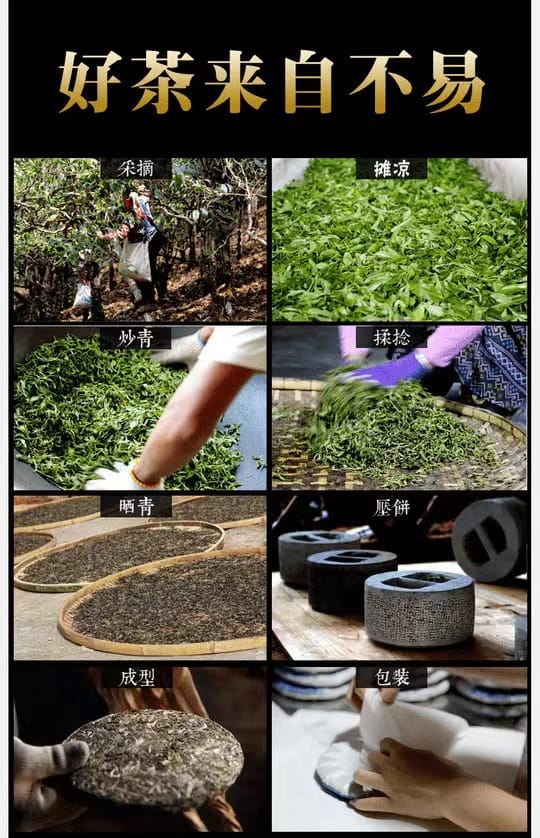If you like drinking tea, especially black tea, you should notice:When the black tea is cooled, a thin tea film will form on the surface of the tea. When you touch the film with a spoon, it will crack like an ice floe, and the surface of the spoon will be stained with a brown substance.How did this tea film form? Today we are going to solve some problems about “tea film”.What is a film that floats on the surface of tea after it cools?Some people say that the tea film after cooling is the oil used for stir-frying tea;Some people say that the “vegetable oil” of the tea itself or the “wax” contained in the leaves;Others say it’s floating ash mixed into the tea making process; …Which one is right?Back in 1994, MichaelSpiro and Deogratius Jaganyi, two tea-loving chemists from the chemistry department at Imperial College London, also noticed the “tea film phenomenon”. “Only by knowing what a tea film is and how it forms can it be effectively eliminated,” Professor Pearce said.

So, through scanning electron microscopy, mass spectrometer and other precision instruments analysis, they found that tea film is not a simple layer of “oil film”, but the interaction of air, tea polyphenols and calcium carbonate ions on the surface of tea water, and small particles of insoluble carbonate and hydroxide attached to the surface of organic matter formed a film. The main component of the tiny insoluble substance is calcium carbonate (about 15-25%), and the rest is a mixture of complex organic chemicals or minerals.

Calcium ions and bicarbonate ions in water are the key factors to induce the formation of tea film, but only one of calcium ions or bicarbonate ions can not make tea film “manifest”, and both must exist at the same time.
Sometimes you can see the tea film, sometimes you can’t?
To explore the conditions under which tea membranes form, the two tea-loving chemists discovered that when tea is brewed in distilled water from the laboratory, no tea membranes appear. This suggests that certain components of the water used to brew tea are key factors in the formation of tea film.
The biggest difference between distilled water in the laboratory and ordinary tap water is that tap water will contain calcium and magnesium plasma, and the more calcium ions, the easier it is to form tea film. In other words, the higher the hardness of the tea water, the easier it is to form a tea film.

Clever little friends will think that according to the formation of tea film, you can test the hardness of drinking water at home!
In addition to the fact that the hardness of the water can affect the formation of the tea film, the two chemists also brewed the tea in a nitrogen environment in order to avoid letting the tea come into contact with the oxygen in the air, and they found that the tea brewed in this environment, it is difficult to observe the tea film.
Therefore, only in the environment with oxygen can tea film be formed, and the formation of tea film must occur oxidation reaction.

Caroline Giacomin, a doctoral candidate at the Swiss Federal Institute of Technology Zurich, has also studied the “tea film” phenomenon.
In order to investigate the properties of this film, she used a double-cone interface rheometer to analyze the mechanical properties of the tea film from the perspective of rheology. By using different concentrations of calcium carbonate solution to brew tea, although sometimes the naked eye can not see the tea film, but the rheometer can be “seen”. This is because:
When the elastic modulus of the tea film is less than the viscous modulus, the tea film will appear in the form of “liquid”.
When the elastic modulus of the tea film is greater than the viscous modulus, the tea film will appear in a solid form, then you touch it slightly, the tea film will crumble.
Why is there a tea film only when brewing black tea?

You may have questions, often purchased lemon black tea will not appear in the tea film, can it be said that this is due to the use of pure water or oxygen isolation tea? In fact, sugar or lemon juice can thin the tea film or inhibit its formation.
However, when drinking milk tea, sometimes you can see the tea film, and sometimes you can’t see the tea film, because a small amount of milk will promote the formation of the tea film, and a large amount of milk will not let the black tea form the tea film。
The variety of tea is determined by the way the tea is processed, such as fermentation, oxidation, compaction, cooking and drying.
About two-thirds of tea consumption worldwide is black tea and another 30 percent is green tea. Tea film is not formed on white tea, yellow tea, green tea or lightly processed oolong tea after cooling, but only on black tea, because black tea is relatively different from other varieties of tea. It belongs to whole fermentation, the fermentation time is relatively long, and the degree of oxidation is between 70% ~ 95%.
Is drinking tea film harmful to the body?
“Tea film” looks dirty, like the “oil film” in the puddle next to the gas station, so will it affect your health?
In fact, tea film is just some insoluble particles attached to the surface of organic matter, it has no taste, no taste, and no harm to the human body.
Yunnan tea, rose, jasmine, Pu’er flower tea, dragon pearl raw tea, arbor flower bulb, beauty and health functional tea
Retailer Price:€39.00Group €19.50Save: €19.50 (50%)Wholesale price will apply for minimum quantity of 20 products.Zhengshan Small Black Tea Portable Tea Bag
Retailer Price:€39.00Group €19.50Save: €19.50 (50%)Wholesale price will apply for minimum quantity of 20 products.








asasasxzc
so good